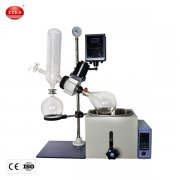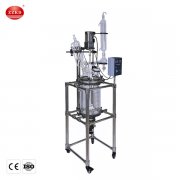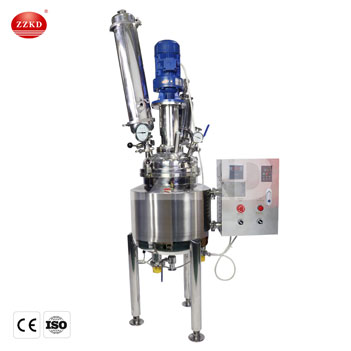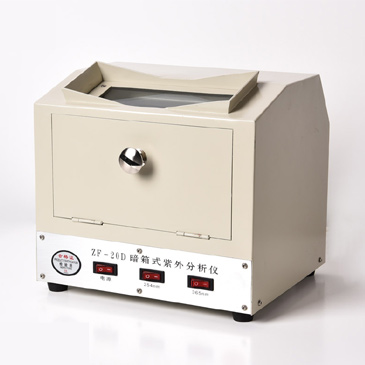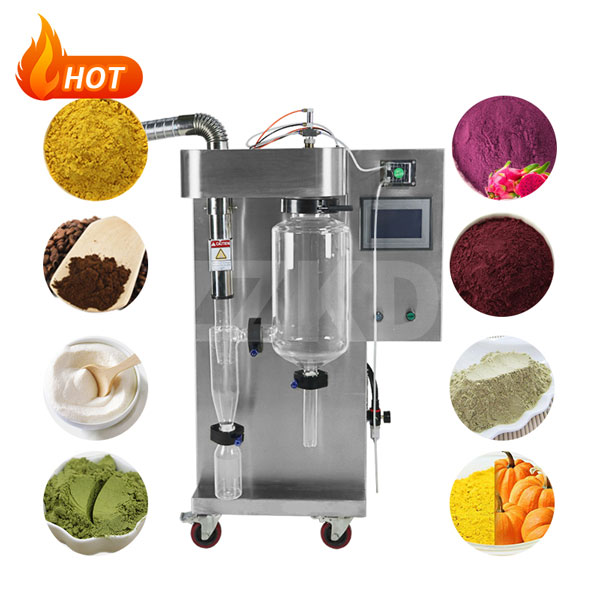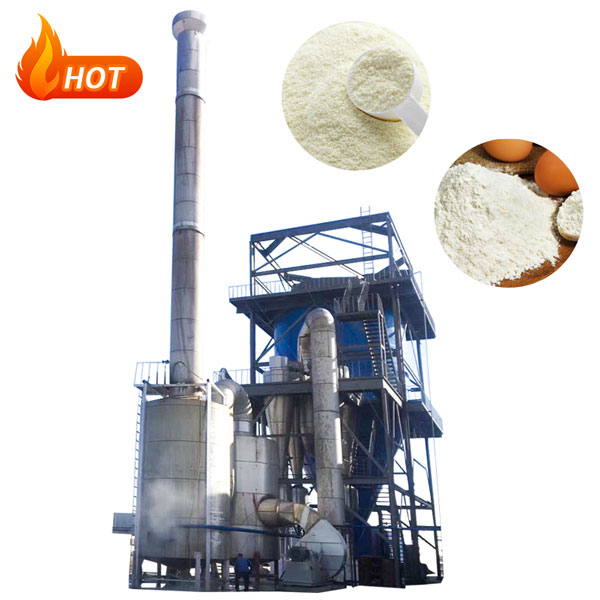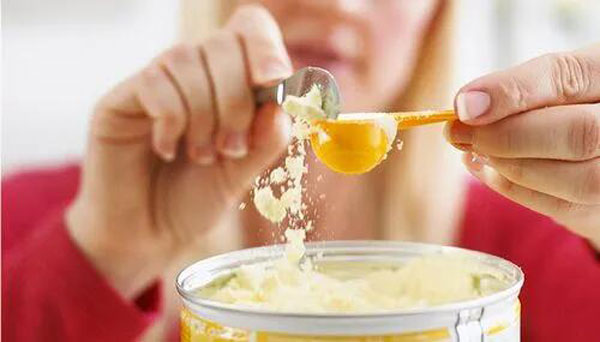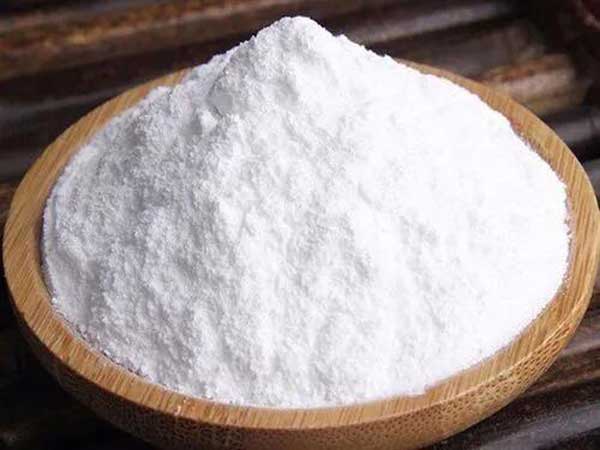Our pilot spray dryer
Spray dryers are designed to assist scientists in their R&D activities quickly and efficiently. Flexible and able to handle multiple drying and encapsulation processes.
Click To View:
5L Spray Dryer
The spray dryer specially developed by ZZKD for small-scale production while maintaining the process performance of large-scale industrial equipment is one of the most advanced laboratory spray dryers currently on the market. Every detail has been studied to replicate the behavior of industrial production units, maintaining an extremely compact design, allowing rapid development of products with similar properties to dusts obtained on an industrial scale, minimizing development costs and scaling up.
Click To View:
Lab Scale Spray Dryer
The spray drying process consists of four stages:
Atomization of the liquid to be dried (slurry)
Slurry atomization is to disperse the slurry into fine mist droplets. The average diameter of the droplets is about 150-350μm, and the size of the droplets is determined according to the different uses of the powder. The droplet size and uniformity have a great influence on the quality of the product, and the atomizer is a key component. The atomized mist droplets are very small and have a large specific surface area. When in contact with hot air, mass transfer and heat transfer are very easy to occur, so that the mist droplets are quickly vaporized and dried.
The hot gas is in contact with the atomized liquid
The mixing of atomized liquid and hot air depends on the relative position of the hot air inlet and the atomizer. The contact between atomized liquid and hot air (1) co-current type is divided into downward co-current, upward co-current and horizontal co-current ;
(2) Countercurrent type;
(3) Mixed flow.
Solvent evaporation
The evaporation process is carried out in stages. These stages are commonly referred to as constant rate drying and falling rate drying. During the drying phase, there is sufficient moisture content in the droplets to evaporate at a constant rate at all times. In the second stage, compared to the first stage, the moisture is more resistant to evaporation by the hot air, so the evaporation process is slowed down, resulting in a slower drying rate. The additional resistance provided by the second stage depends on the physical and chemical properties of the feed and the pore structure of the solid droplets.
Separation of dry product and drying medium
After complete evaporation of the water from the slurry droplets, the solids will dry in granular form and need to be separated from the drying medium, ie hot air and a drying chamber. Separation equipment provided after the drying chamber facilitates this purpose. Cyclone separators, wet scrubbers, baghouses and electrostatic separators are available to ensure complete recovery of the dry product and to ensure that the exhaust air is free of any environmentally harmful particulate matter so that the air can be safely released into the environment.
Application fields of spray dryer:
Commercial food
The pilot spray dryer was widely used in the production of milk powder during World War II. It’s no surprise that the largest market for pilot spray dryers is the food industry, especially milk powder and instant coffee production.
Starting from milk production, the use of spray drying technology has been extended to the production of powdered foods such as coffee, algae, protein hydrolyzate, yeast extract, starch and non-dairy creamer.
Since the pilot spray dryer is fully automatic and continuous, you can now quickly generate agglomerates or powders from liquids such as emulsions, suspensions and solutions. In addition, the pilot spray dryer is ideal for drying heat-resistant and heat-sensitive foods with short dwell times, no oxidation and minimal residual moisture.
The pilot spray dryer is also used for active substances, which are homogenized into slurries or emulsions before drying. By encapsulating food, you can protect your product from thermal degradation, improving the functionality of the final product.
Medical products
Not all medical doses are soluble. Thus, spray drying technology provides the pharmaceutical industry with an economical and fast alternative for converting liquid feed into powdered medicines and additives such as extracts, infusions, inorganic pharmaceutical salts, vitamin C and epinephrine.
Since the 1940s, the application of pilot spray dryer in the pharmaceutical field has developed from simple drying methods to complex processes, such as the production of excipients such as ointment bases and preservatives, and the separation of difficult-to-crystallize or heat-sensitive active ingredients.
Needless to say, spray drying is an ideal process for those requiring precise attributes, especially morphology, stability and particle size of pharmaceutical products.
Industrial Products
In addition to food and pharmaceutical production, spray dryers are essential for the industrial production of powdered materials such as catalyst supports, ceramic materials, microalgae, detergents and paint pigments.
Pilot spray dryers are basically used for encapsulation in most industries, and applications in industrial environments include not only the production of powders, but also the production of textiles, adhesives, pesticides, carbonless copy paper and anti-corrosion coatings, to name a few . Microencapsulation techniques include the use of coatings such as polyvinyl alcohol, sodium alginate, starch, and gelatin.
With encapsulation, you gain many benefits; one is to extend the shelf life of the product and the other is to increase stability. On the other hand, you also reduce the evaporation of volatile cores in products such as paints and insecticides. Among other things, you can reduce oxygenation, prevent chemical reactions, and improve adhesive handling properties.

 Products
Products





